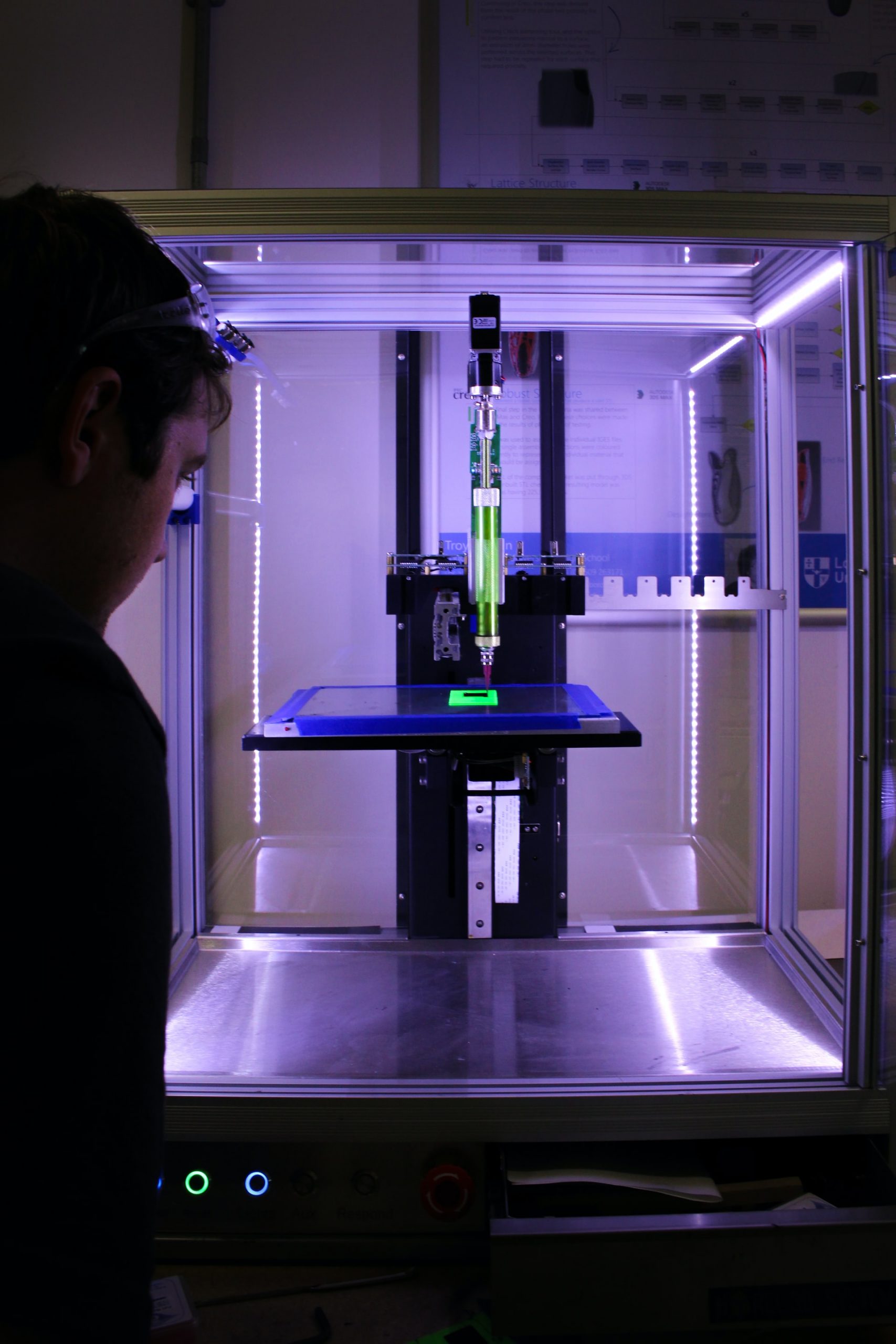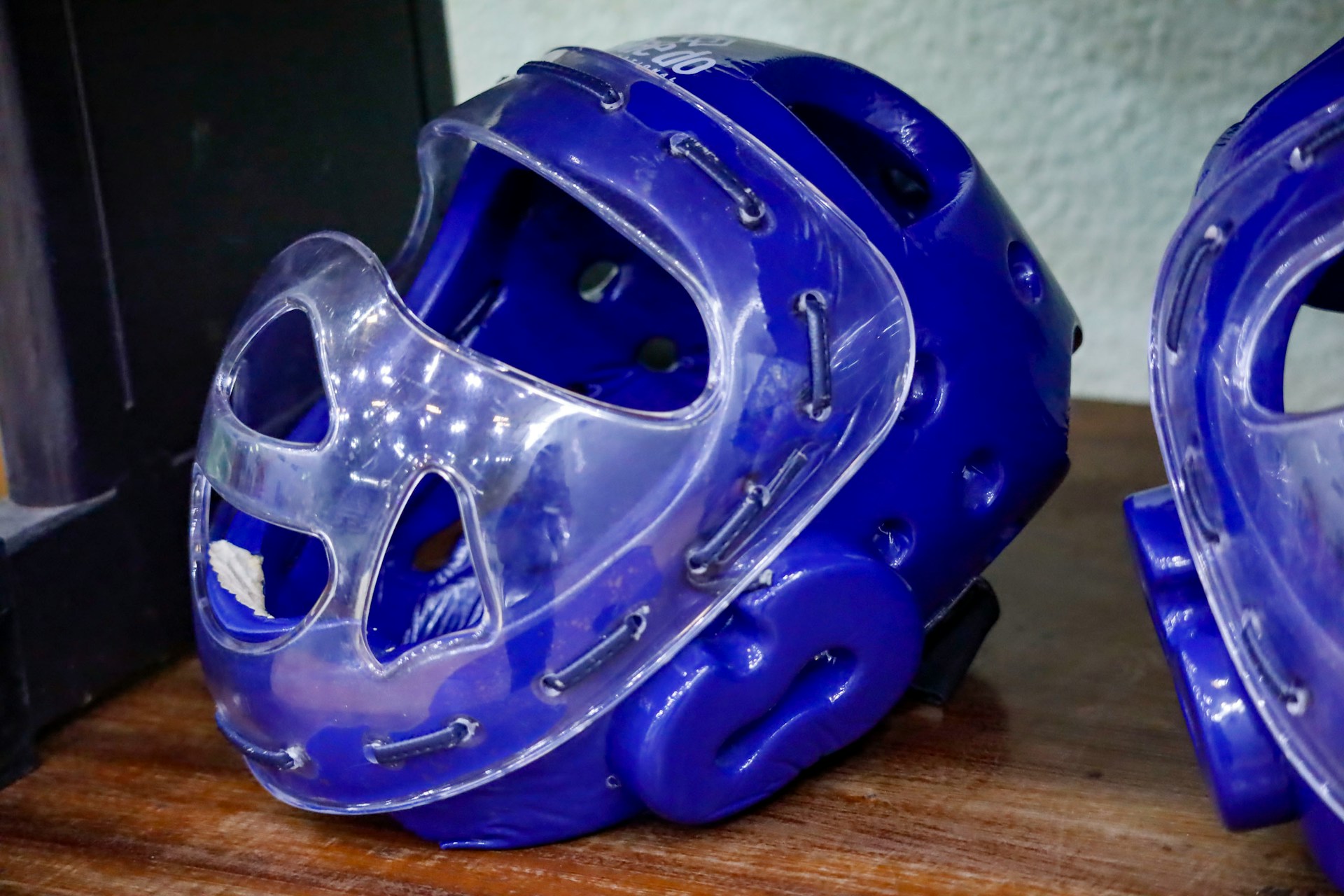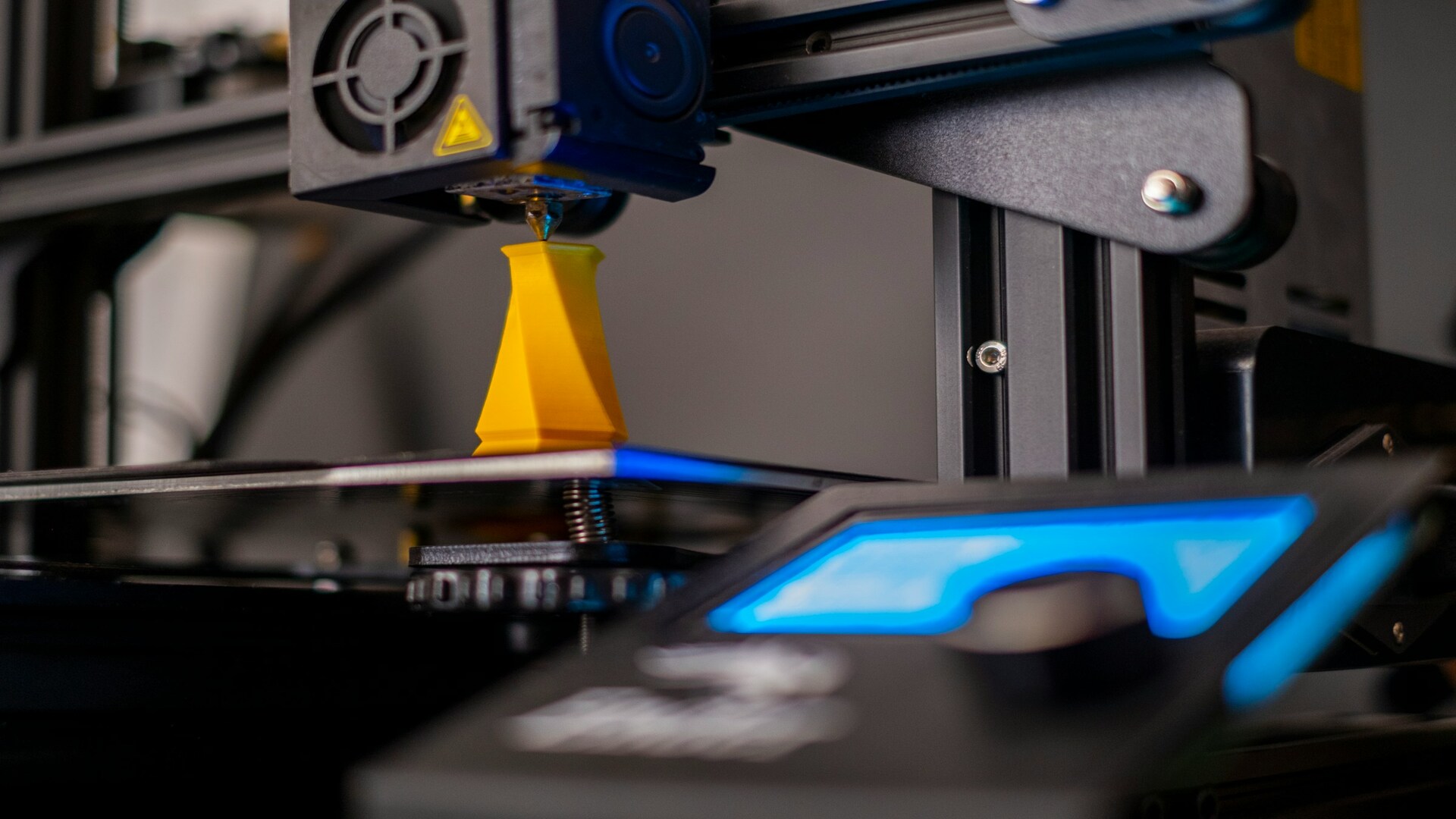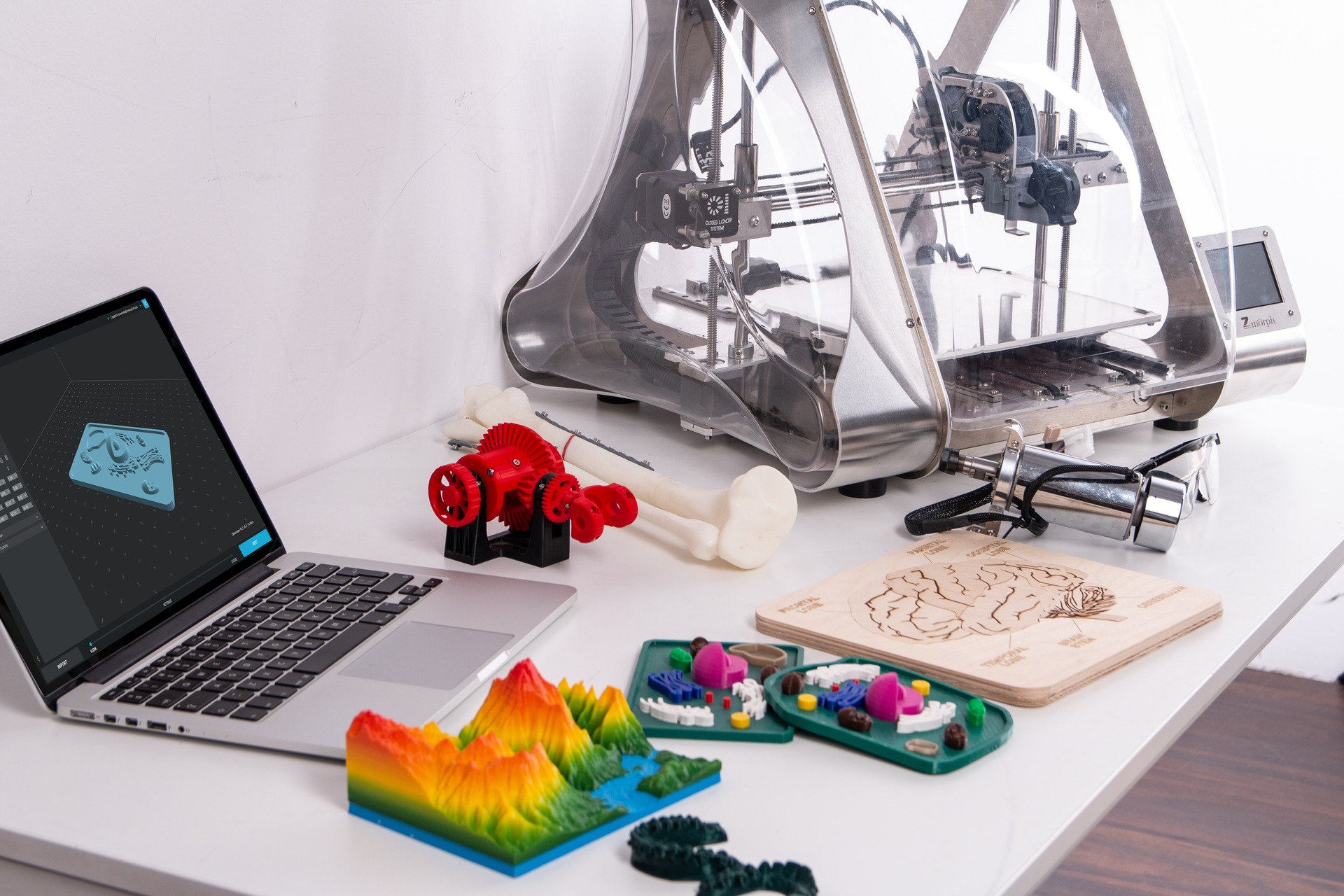
How Does the Military Use 3D Printing?
March 18, 2021 - Emily Newton
Revolutionized is reader-supported. When you buy through links on our site, we may earn an affiliate commission. Learn more here.
Additive manufacturing techniques, like 3D printing, offer significant benefits across industries — such as reduced waste, faster manufacturing times, and lower costs for small production runs.
While not one of the first adopters, the military has begun to steadily increase its use of 3D printing technology over the past few years. Most military applications of the technology are still experimental, but early projects have yielded promising results and will likely show us how the military will use the tech in the near future.
These key uses of 3D printing in the military show where the technology is likely to go over the coming decade, and the advances that are likely to make their way into civilian life after use by the military.
The Military’s Early Projects
In 2019, the Army secretary adopted a new policy on advanced manufacturing. The policy, intended to help the military manage “obsolescence, diminishing sources of supply, and sustained operations in austere environments,” requires the use of technologies like 3D printing, and is a major step forward for the use of additive manufacturing in the military.
The same year, the USS George H.W. Bush arrived in Portsmouth, Virginia, for a 28-month drydock. The purpose of the dock was for standard maintenance, but also to outfit the ship with a range of additive manufacturing equipment that may, in the future, help to rapidly manufacture replacement parts and equipment.
Right now, however, practical usage of military and army additive manufacturing is limited to a handful of projects.
The Navy, for example, has adopted additive manufacturing to create essential components for its navigation systems.
Military manufacturers like Northrop Grumman also sometimes use 3D printing to streamline their manufacturing processes. Often, additive manufacturing helps to create tools and other devices for use in the manufacturing process, though finished goods will typically be created with more conventional (subtractive) manufacturing methods.
Other early experimental use of the tech included a Marine project to 3D print a functional concrete footbridge in California. The bridge required no mixing of gravel and heavy materials on-site and was manufactured with a specialized, military-developed 3D printer.
Military Innovations in 3D Printing
3D printing innovations made by military researchers and engineers have also helped make the technology more useful for military applications.
For example, part of the reason the military has been slow to adopt additive manufacturing is the strength of finished products made with common plastic 3D printing filaments.
Traditional 3D printing filament — like polylactic acid (PLA) plastic or acrylonitrile butadiene styrene (ABS) plastic — can be used to quickly and inexpensively produce a lightweight end product. However, that product will be brittle, and won’t stand up to serious shock or strain.
This makes it much less practical for any environment where you need equipment that can handle serious, sudden force.
The military’s solution to this has been to build a better filament — in addition to using existing, more-robust-than-PLA filaments, the military has also developed their own. These filaments, made of a combination of ABS and a “star-shaped” polycarbonate core, are cost-effective while retaining many of the desirable properties of ABS, like its quick print time and low weight.
Once printed, the final product will need to be annealed. Because the two filament components melt at different temperatures, this will fuse together the two filament components, creating an end product with high levels of stability and toughness. This extra step makes the manufacturing process slightly more complex than most 3D printed parts, but the added strength is likely necessary for many military applications.
Like other innovative materials that originated in military laboratories — like aluminum oxynitride, or transparent aluminum — this material may also have a major impact on the civilian use of additive manufacturing in the next few years.
How the Air Force Has Used 3D Printing
Across the military, early additive manufacturing projects had a limited scope. Nonetheless, these projects have laid the groundwork for more ambitious and wide-ranging uses of additive manufacturing.
The Air Force, for example, was one of the first major adopters of 3D printing tech. Soon, 3D printing may become central to the branch’s manufacturing and sourcing processes.
The Air Force’s approach to additive manufacturing comes from outside the military. Their model is Boeing, the airplane manufacturing company, which has been experimenting with 3D printing since the 1990s.
Towards the end of 2010s, Boeing began to use 3D printed parts in their finished planes. These parts offered some significant benefits. In the case of one Boeing plane, the 777X, the result was 10% lower emissions than a comparable jet. But the main reason for the change was issues in Boeing’s supply chain.
For years, Boeing had struggled to find suppliers that could provide a steady source of mixed-metal parts that are necessary for airplane construction. This problem was likely to become worse over time.
Legacy planes, for example, may still be in use long after production on those planes has ended. Manufacturers, as a result, would need to be ready to manufacture extremely small batches of replacement parts as needed — a task that was less economical than mass manufacturing parts for new planes, and one that may not fit neatly into existing workflows.
This made these replacement part jobs a hard sell to many suppliers. As a result, small or single batches of replacement parts could be difficult to source or highly expensive.
3D Printing Replacement Parts
Rather than continue to search for manufacturers willing to take on these jobs, the company instead partnered with GE to make the parts themselves. By using additive manufacturing, they could create mixed-metal parts as needed, without needing to retool a production line for a single part or outsource manufacturing to a third party.
The Air Force also began to take a similar approach, and for similar reasons. Some Air Force equipment designs have been in use for decades — like the GE-designed F-110 engine, first developed in the 1980s, and the TF34 engine, which has been in service for more than 40 years.
Replacement parts for these engines are still necessary. Demand for these parts, however, is low and infrequent. The Air Force has struggled to find traditional manufacturers willing to take on jobs to replace odd parts.
According to a 2020 statement from Air Force acquisitions head Will Roper, the use of 3D printing has been “going like gangbusters,” providing thousands of individual replacement parts for use in aircraft and munitions. Soon, Roper said, the Air Force hopes to use 3D printing to also print parts for satellites.
Like Boeing, the Air Force teamed up with GE to begin experimenting with additive manufacturing technology.
In the future, they also hope 3D print replacement parts for legacy aircraft, helping to shore up issues with sustainment in sourcing that the branch has grappled with in recent years.
As the military experiments with the tech, innovations from within the Air Force are likely to find their way into civilian use as well. Airplane manufacturers beyond Boeing may become more willing to use additive manufacturing in coming years. This will help keep legacy aircraft airborne longer, cut down on manufacturing costs, and reduce waste in aircraft manufacturing.
The Future of 3D Printing With the Military
Military use of additive manufacturing hasn’t taken off yet — most applications right now are experimental and limited in use. In the future, however, military officials hope that 3D printing will provide a quick and reliable manufacturing option for field repairs.
If a vehicle component breaks in the field, for example, they could potentially 3D print replacement parts.
Significant challenges remain — including issues with common 3D printing filaments. If military engineers can overcome these major challenges, however, additive manufacturing may provide some significant benefits for the military.
Soon, it may be normal for engineers across the military to manufacture single-unit batches of replacement parts, helping to ease the military’s sustainment issues and simplify repairs in the field.
Revolutionized is reader-supported. When you buy through links on our site, we may earn an affiliate commission. Learn more here.
Author
Emily Newton
Emily Newton is a technology and industrial journalist and the Editor in Chief of Revolutionized. She manages the sites publishing schedule, SEO optimization and content strategy. Emily enjoys writing and researching articles about how technology is changing every industry. When she isn't working, Emily enjoys playing video games or curling up with a good book.







